In image editing in Affinity Photo, adjustment layers are essential to achieve creative effects. Among the most important adjustment layers are the “Color Separation” and the “Threshold”. This guide explains how to use both effectively to enhance your images and create interesting graphical effects.
Key Insights
- The Color Separation reduces the number of color gradations in an image and can lead to exciting graphical effects.
- With the Threshold, you can easily convert images to black and white and analyze the brightest and darkest areas.
- Both settings are useful for enhancing visual contrasts and optimizing image aesthetics.
Using Color Separation
Let’s start with the adjustment layer “Color Separation”. This setting allows you to reduce the color gradations in an image, which can create unusual, visually appealing effects. To use Color Separation, proceed as follows:
First, click the adjustment icon in the layers palette and select the “Color Separation” option. You will immediately see a change in the preview; the previously soft color image will now appear more graphical. This is particularly useful when you have strong contrast in your image.
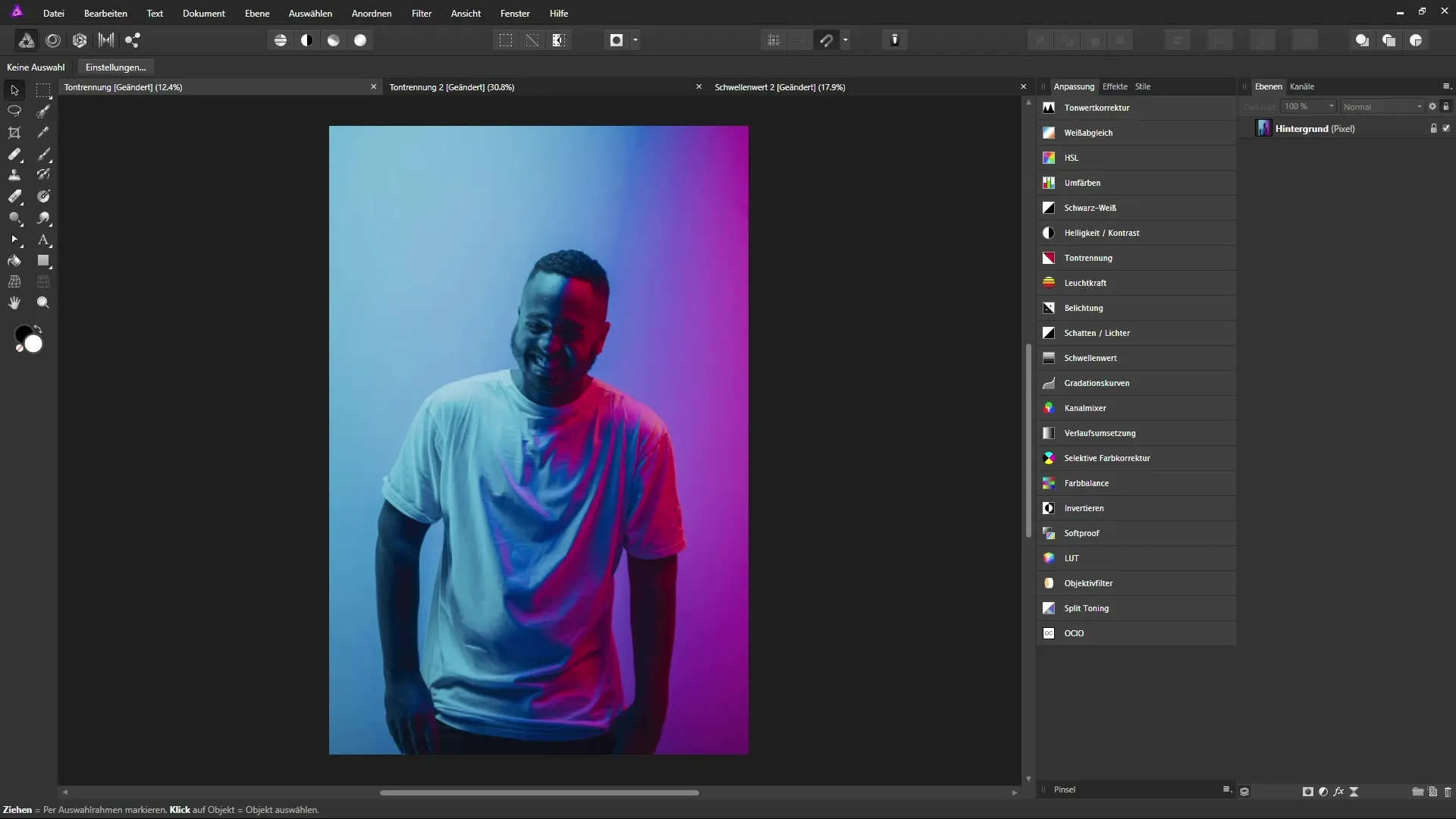
You will notice a slider next to the preview area. Moving this slider to the right increases the color gradations, while moving it to the left reduces the number of color gradations. This is particularly impressive when you set the slider to a value of 1, for example.
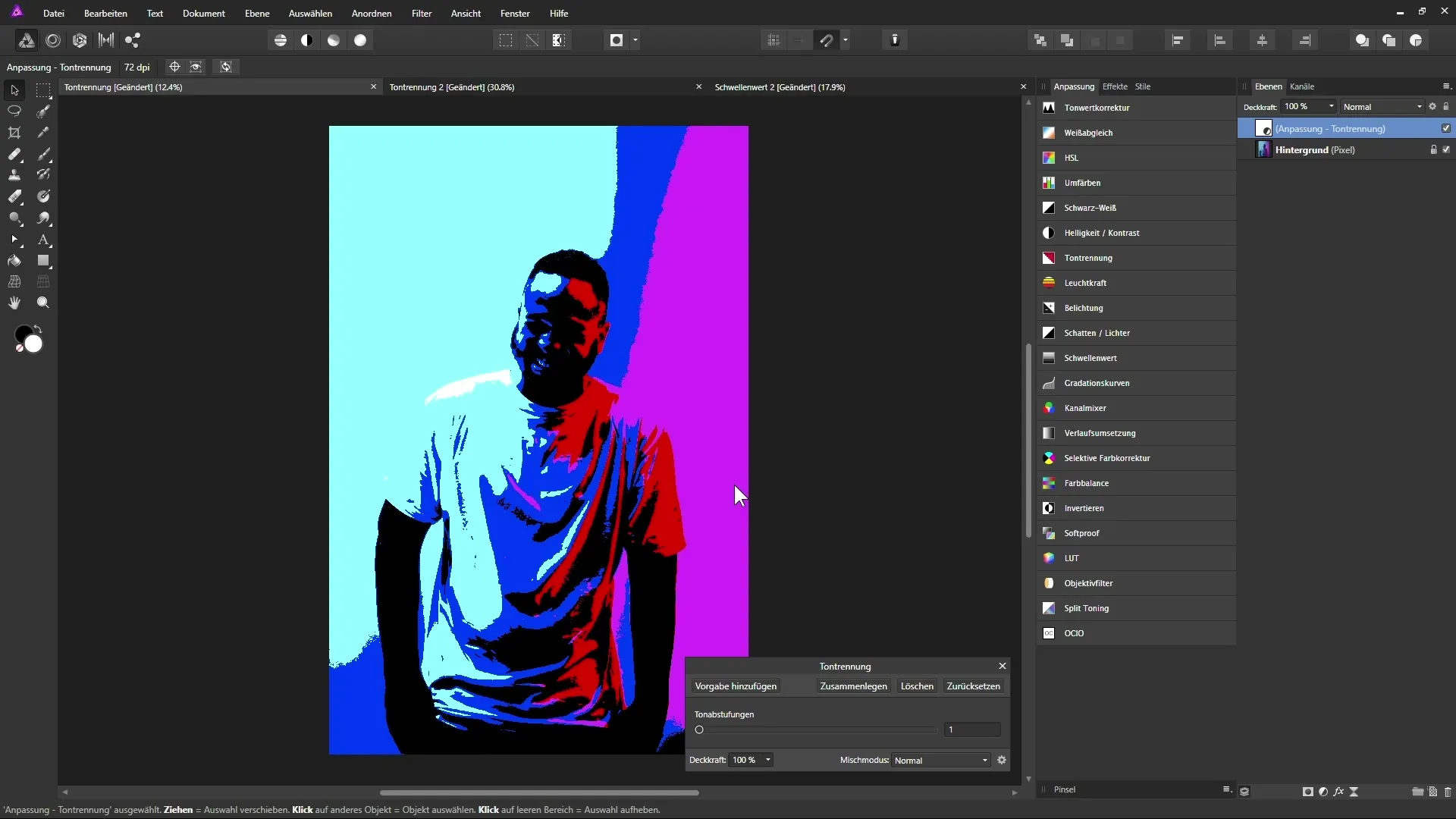
It is important to note that the color gradations are considered per color channel. This means that even with extremely few color nuances in an image, there is still the possibility to recognize different shades in the individual channels.
Therefore, if you switch to the channel palette—found under “View > Studio > Channels”—you can view the individual Red, Green, and Blue channels. These may have different numbers of gradations, which is why Color Separation can appear very graphical without reducing the entire image to just two colors.
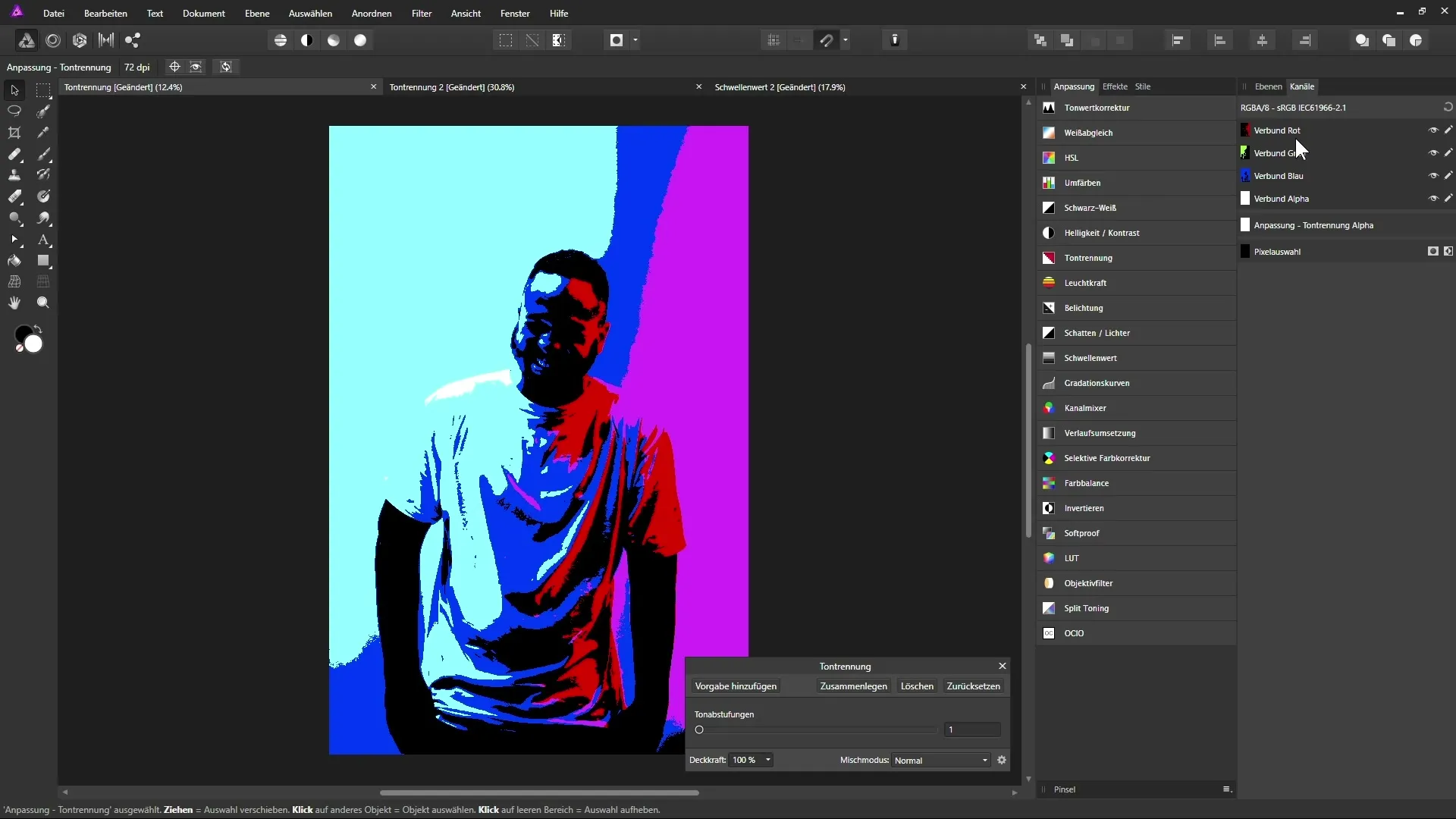
In an image with strong color contrast, the effects of Color Separation can be observed as if by magic. Slowly move the slider to the right and observe how the color gradations increase and the intensity of the image rises. Such high-contrast images are often seen on posters or graphics.
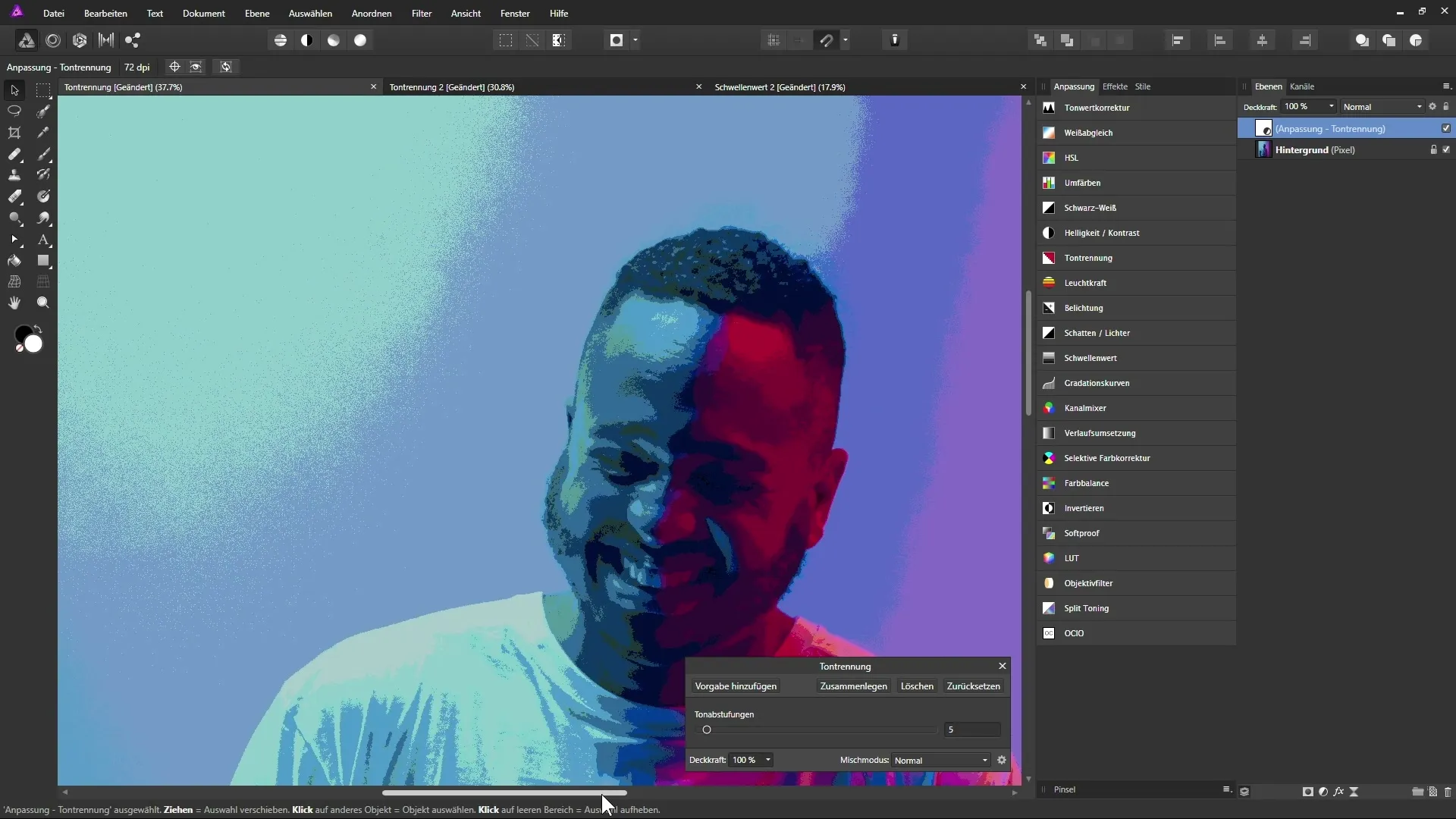
Before moving on to the next step, make sure you are satisfied with the result. Sometimes it takes trial and error to find the perfect value for Color Separation.
Applying the Threshold
Now that you know about Color Separation, let's take a look at the adjustment layer “Threshold”. This can be used for quite different effects. First, select your image in the layers palette and go back to the adjustment layer menu to choose “Threshold”. Initially, it can be frustrating, as the image turns white and nothing is visible at first.
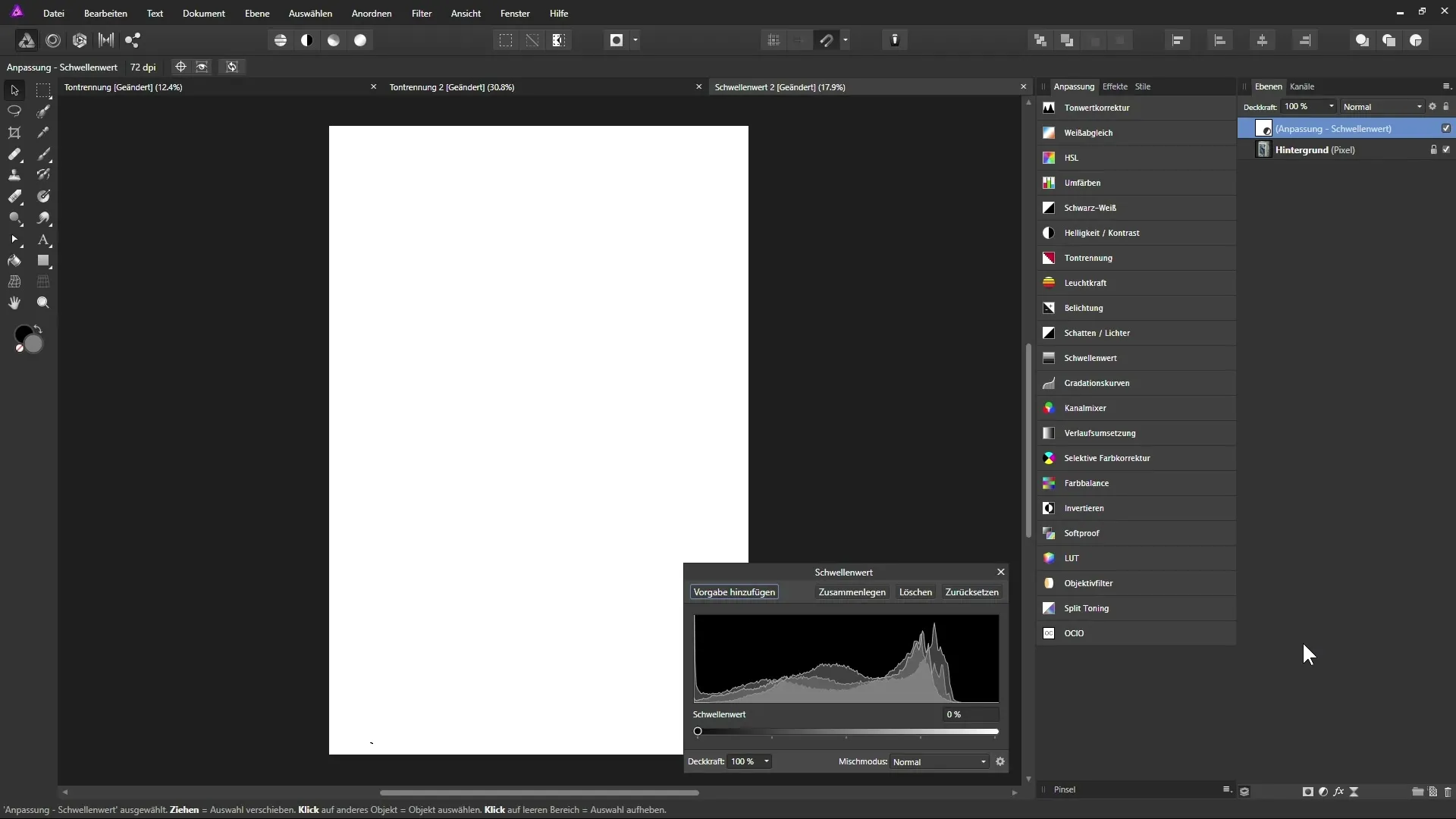
The histogram of the image will help you understand the threshold. It shows the tonal distribution of your image with the different channels overlaid. When you move the handle to the left, you will find that the tonal values in the image become black to the left of this point and white to the right.
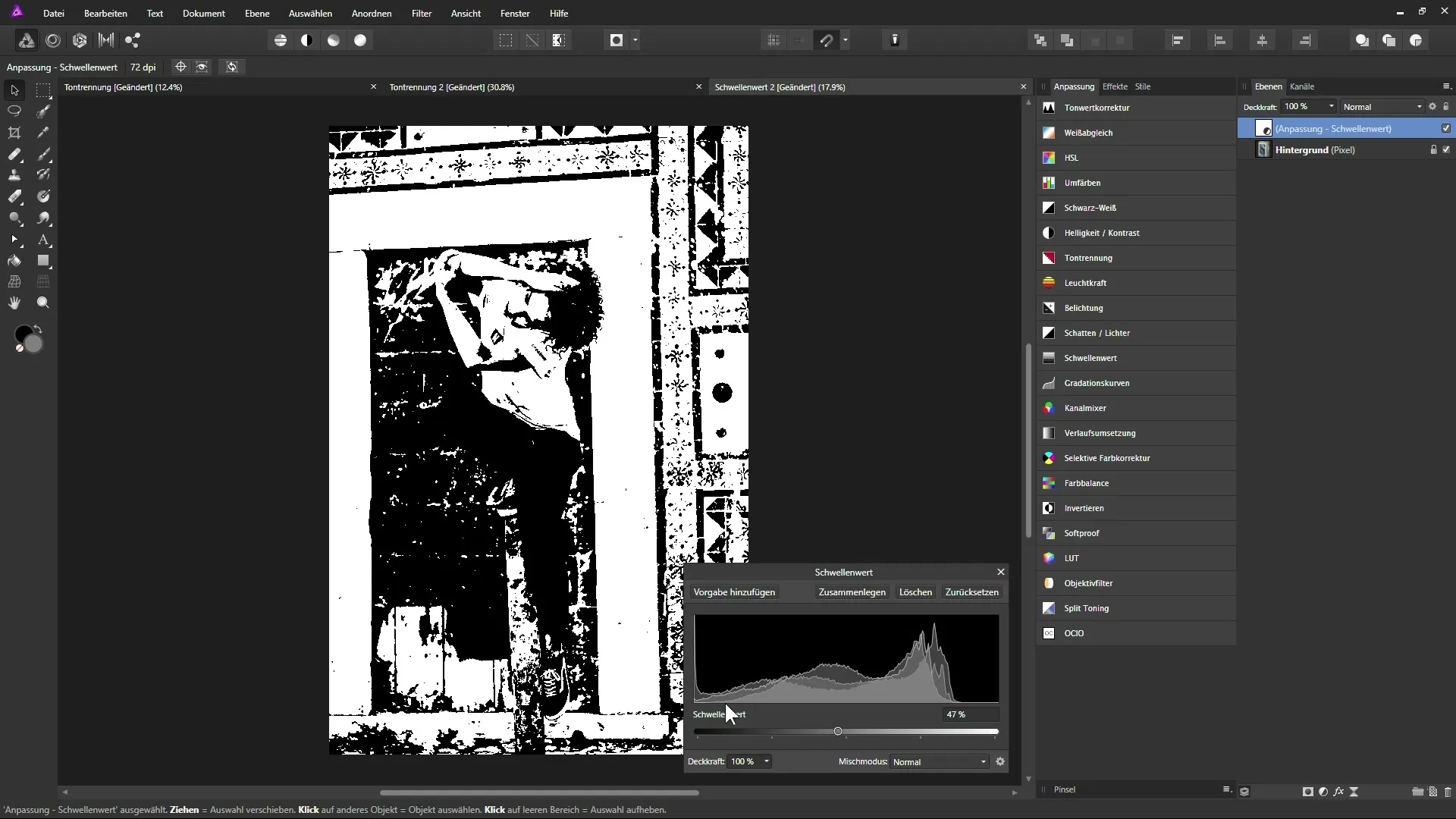
A conscious use of the threshold allows you to create a pure black-and-white image. It is important to recognize the brightest and darkest areas, which gives you clues on how to increase your contrast.
When you drag the slider to the left, for example, you can make the darkest areas stand out. If the slider is all the way to the left, you only have the darkest areas, and the image appears unusable.

This technique can also be useful when adjusting the tonal values of the image. By using the threshold, you can specifically highlight the brightest and darkest areas to get a better impression of the overall image.

Utilizing this morphology of the image allows you to gain deeper insights, especially when working with low-contrast images.
Summary – Effectively Using Color Separation and Threshold in Affinity Photo
With the combination of Color Separation and Threshold, you have powerful tools at your disposal to significantly enhance the visual quality of your images in Affinity Photo. Color Separation allows you to create interesting graphical effects, while the Threshold helps you analyze and optimize the representation of light and dark areas.
Frequently Asked Questions
How can I apply Color Separation in Affinity Photo?Color Separation is activated via the adjustment layer “Color Separation” in the layers palette.
What does the Threshold do in an image?The Threshold converts the image into a black-and-white representation and shows the distribution of dark and light pixels.
Can I see the effects in real-time?Yes, the effects of Color Separation and Threshold are immediately visible in the preview as soon as the adjustment layer is applied.
Can I also edit images with low color contrast using Color Separation?Yes, but the results in such cases are less pronounced due to fewer gradations available.
Why should I use the Threshold for image analysis?The Threshold helps to easily identify the darkest and lightest areas of the image, which aids in contrast adjustments.


